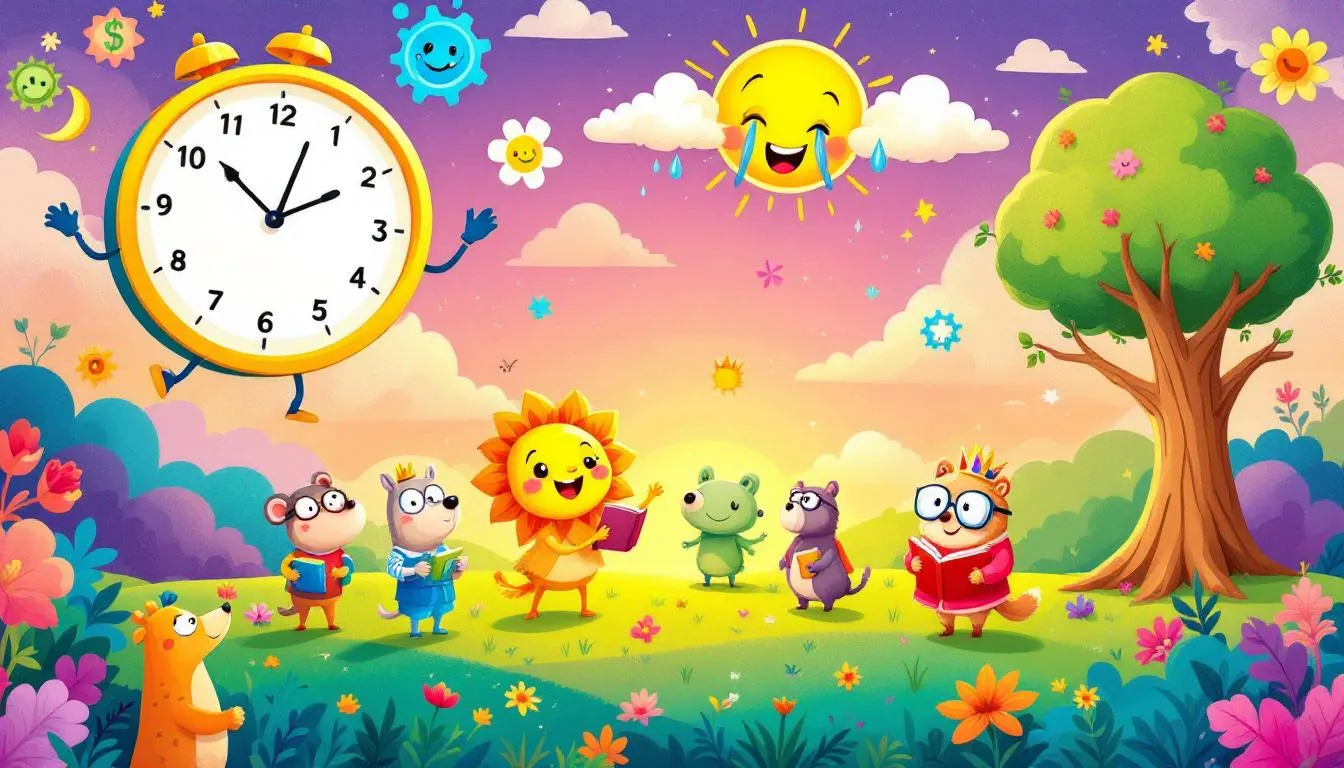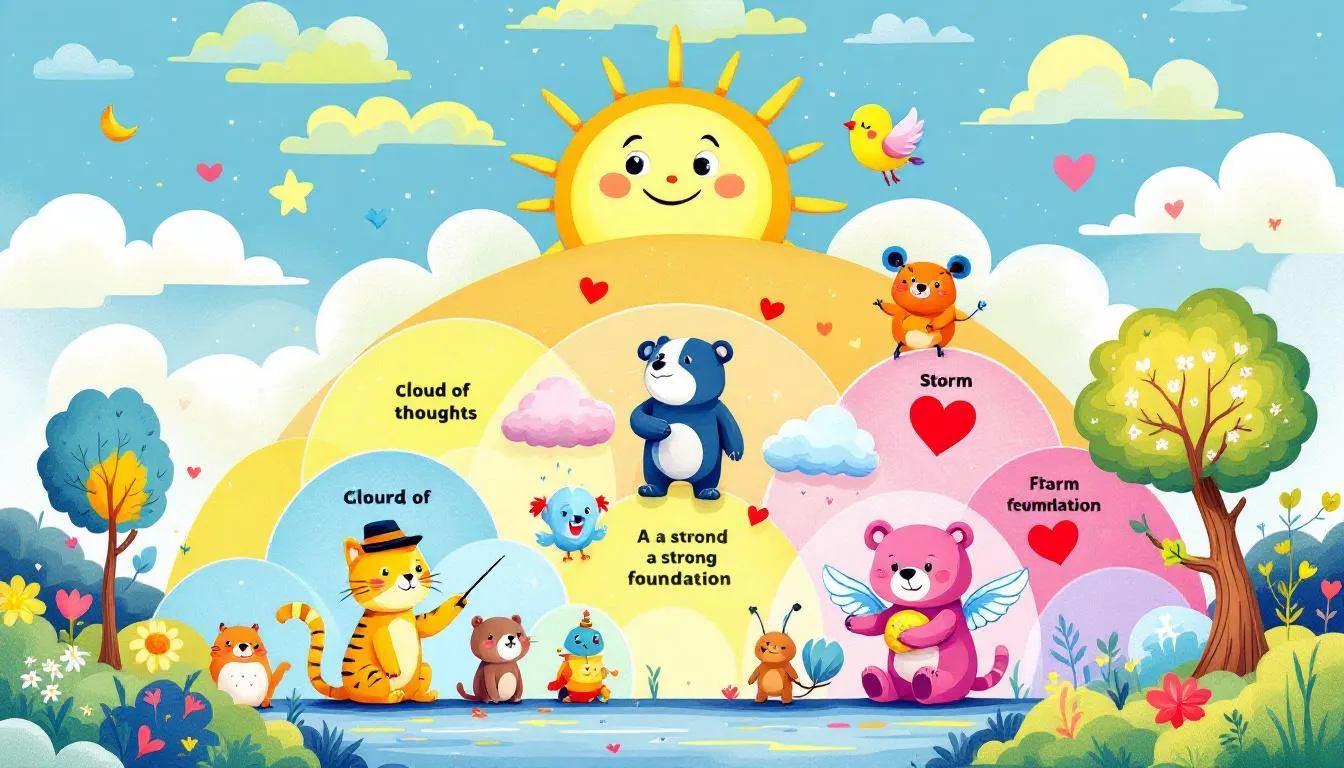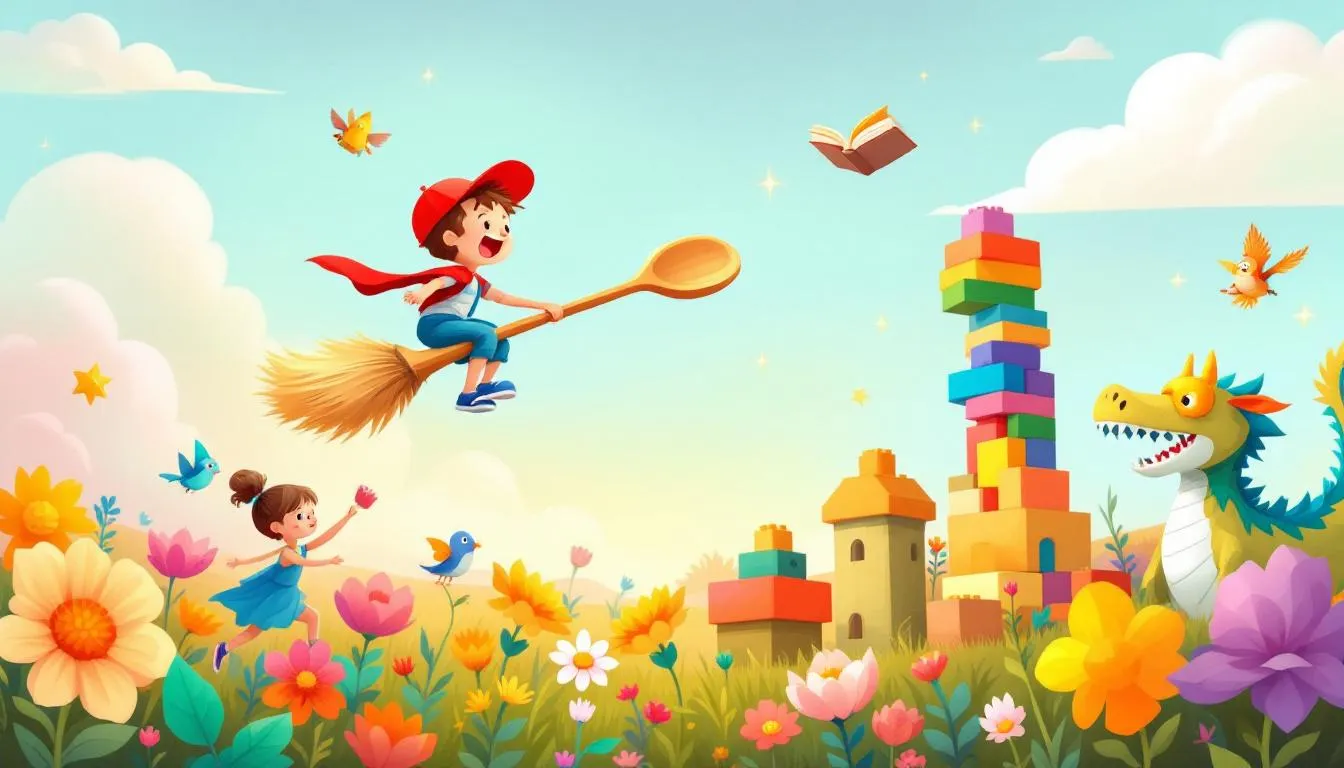Metaphor for Kids: Fun and Easy Examples to Learn
Want to teach Metaphor for Kids in a fun way? WuKong Education will explain what metaphors are and gives simple examples and activities to make learning enjoyable.
Key Takeaways
- Metaphors are powerful tools that create vivid imagery, making language more engaging and relatable for kids.
- Understanding the difference between metaphors and similes enhances children’s appreciation for figurative language and sharpens their communication skills.
- Engaging activities, like metaphor treasure hunts and charades, can make learning about metaphors fun and stimulate children’s creativity.
1.Understanding Metaphors

Metaphors are a type of figurative language that compares two unlike things by stating that one thing is another. This direct comparison helps create vivid imagery, making our language more colorful and engaging. For instance, saying “the world is a playground” gives a playful and imaginative view of the world, rather than simply describing it as a place where people live.
One of the magical aspects of metaphors is how they engage our sense. When we say “laughter is sunshine,” we can almost feel the warmth and light that laughter brings to our days. Metaphors can compare things based on:
Empower your child’s critical thinking with resh, modern English reading and writing courses!
Suitable for global learners in grades 3-6.
Get started free!- their appearance
- texture
- smell
- sound
- taste making stories and descriptions come to life in our minds. The sun can enhance these experiences, adding a layer of brightness to our perceptions.
Children can grasp the concept of metaphors more easily through relatable examples that illustrate these comparisons. Familiar items like toys or animals can help kids grasp the concept of metaphors and enjoy them. For example, saying “curiosity is a flashlight that lights up the dark corners of the mind” can help a child visualize how curiosity works. Additionally, using metaphor examples for kids can further enhance their understanding.
2.Metaphor vs. Simile
Metaphors and similes are both figurative language tools that involve comparisons, but they do so in different ways. A metaphor makes a direct assertion by stating that one thing is another. For example, “the appeal for money caused a flood of donations” is a metaphor that directly compares the appeal to a flood. In contrast, a simile explicitly indicates the comparison using the words “like” or “as.” Examples of similes include “as bright as a button” and “her voice is like a gentle breeze.”
While both metaphors and similes add richness to our language, metaphors are often more powerful because of their directness. They can convey emotions or concepts more vividly, making them a favorite tool in writing and everyday conversations. For instance, saying “anger is a storm” creates a strong image of anger’s intensity and temporary nature.
Understanding the difference between metaphors and similes helps us appreciate the nuances of figurative language. While similes make comparisons clearer, metaphors often leave more to the imagination, inviting readers to interpret and engage with the text on a deeper level.
3.Why Use Metaphors?

Metaphors are not just decorative elements in language; they serve several important purposes. Firstly, they help convey complex ideas in relatable ways, making communication more effective. Describing patience as a tree that grows strong over time provides a clear and relatable image of what patience entails.
Metaphors also enhance communication skills, helping children relate more effectively with their peers. They enhance creativity and clarity in both writing and conversation by allowing different perspectives. Using metaphors in storytelling can transform a simple narrative into an exciting adventure filled with vivid imagery.
Moreover, metaphors influence our thought processes and shape how we understand the world. They encourage creative thinking, allowing children to convey ideas in more imaginative ways. Interpreting metaphors helps kids develop critical thinking abilities and see beyond the literal meaning of words.
4.Types of Metaphors for Kids

There are various types of metaphors that can help children understand and enjoy figurative language. Each type offers a unique way of comparing things, making them suitable for different contexts and purposes. There are four main types of metaphors:
- Simple metaphors
- Extended metaphors
- Implied metaphors
- Dead metaphors.
Learning about different types of metaphors can be more engaging and fun for kids. From simple comparisons like “the world is a playground” to more complex extended metaphors that explore ideas throughout a story, metaphors add depth and creativity to language.
Here’s how each type of metaphor works.
Simple Metaphors
Simple metaphors make a direct comparison, stating that one thing is another. These metaphors are straightforward and easy for kids to grasp. For instance, “the trees are dancing giants” is a playful metaphor that compares trees to giants, making the image more vivid and fun, illustrating two things at once. Additionally, animal metaphors can also enhance understanding in a similar way when compared to simple metaphors.
Using familiar items like toys or animals can help children understand simple metaphors more easily. Examples like “curiosity is a flashlight” or “laughter is sunshine” use everyday concepts to explain more abstract ideas, making them perfect for young learners’ knowledge.
Extended Metaphors
Extended metaphors are comparisons that last longer than a single phrase or sentence, exploring one main comparison throughout a story, poem, or speech. They allow for deeper exploration of ideas and emotions, much like a series of connected train cars.
An example of an extended metaphor is comparing a journey through life to sailing on a boat, where different stages of life are represented by various parts of the journey, including examples of metaphors and everyday life metaphor examples.
Kids can child create their own extended metaphors by describing events like their school year or a family trip, adding layers of meaning to their experiences with a word that reflects their history.
Implied Metaphors
Implied metaphors suggest a comparison without directly stating it, which means these metaphors engage readers by making them interpret the comparison, adding an element of mystery and intrigue. For example, an implied metaphor is when “the boss barked her orders,” which implies that the boss is like a dog without directly saying so.
Implied metaphors require a bit more thought and imagination, making them a fun challenge for kids. Interpreting these metaphors helps children develop critical thinking skills and appreciate the subtleties of language.
Dead Metaphors
Dead metaphors are commonly used phrases that have lost their original vividness but remain familiar and widely used. Examples include “time is running out” or “the foot of the bed.” Despite losing their original impact, these metaphors play an essential role in everyday communication.
Even though dead metaphors may not evoke strong images, they are still valuable for their simplicity and ease of understanding. They help convey ideas quickly and efficiently, making them a staple in everyday conversations.
5.Fun Activities with Metaphors

Learning metaphors doesn’t have to be a boring task. Families can incorporate metaphor games into their routine to make learning enjoyable. Activities like metaphor treasure hunts, drawing challenges, and metaphor charades help ignite creativity in children and make the learning process fun and interactive.
These engaging activities not only enhance children’s understanding of metaphors but also stimulate their imaginative thinking. Here are some fun activities that will turn learning into an adventure!
Metaphor Treasure Hunt
A metaphor treasure hunt is an exciting activity where kids search for metaphors in books, poems, or signs around the house. During the hunt, they can talk about how these metaphors add magic to the moon stories they find, making each one feel like a shining star. The key to enjoying this activity is to embrace creativity and imagination.
This activity turns learning into an engaging adventure, making kids more enthusiastic about discovering new metaphor examples. It’s a fantastic way to make metaphors a part of everyday life and conversation.
Drawing Metaphors
Drawing metaphors involves children drawing or painting their favorite metaphors. For example, they could draw a picture of “my dream is a soaring kite in the clouds.” This activity helps kids visualize abstract concepts and makes learning metaphors a colorful and creative experience.
It encourages them to think about interesting human metaphors in a new and imaginative way, engaging their brain as they write metaphors.
Metaphor Charades
Metaphor charades is a game where kids act out metaphors without speaking. For instance, they might act out “time is a thief” by pretending to steal a clock. This game helps children understand metaphors better by physically engaging with the concepts.
It’s a fun and interactive way to learn about metaphors and enhance their understanding of figurative language and figure.

Summary
Metaphors are powerful tools that enhance language by making it more vivid and engaging. They help convey complex ideas, promote creative thinking, and improve communication skills. By exploring different types of metaphors and engaging in fun activities, kids can develop a deeper understanding and appreciation for figurative language.
Encouraging children to create their own metaphors not only boosts their creativity but also helps them express their thoughts and feelings in a more colorful and imaginative way. So, let’s embrace the magic of metaphors and inspire our kids to explore the limitless possibilities of language in WuKong ELA [Online Classes]!
Frequently Asked Questions
What is a metaphor?
A metaphor is a way of describing something by saying it is something else, which helps create vivid pictures in our minds. It’s like saying life is a journey to illustrate the ups and downs we all experience.
How is a metaphor different from a simile?
A metaphor directly compares two things without using “like” or “as,” while a simile does use those words to highlight the comparison. So, keep it in mind: metaphors are more direct, while similes are more explicit!
Why are metaphors important for kids?
Metaphors are crucial for kids as they simplify complex ideas and spark creativity, making it easier for them to express themselves and think critically. This ability to connect abstract concepts with relatable experiences not only boosts their communication skills but also enriches their understanding of the world around them.
What are some fun activities to learn metaphor for kids?
You can make learning metaphors fun with activities like treasure hunts, drawing images that represent metaphors, and playing charades. These interactive methods keep things engaging and help you grasp the concept better!
How can creating their own metaphors benefit kids?
Creating their own metaphors really helps kids unleash their creativity and express complex ideas. It also boosts their language skills and appreciation for figurative language!
Empower your child’s critical thinking with resh, modern English reading and writing courses!
Suitable for global learners in grades 3-6.
Get started free!
Elaina Zetts, a teacher from League City, Texas, majoring in Elementary Education, has a master’s degree in K-12 Literacy. Serves as an ELA teacher in a public school in Friendswood, Texas. Has taught ELA for 15 years and is good at teaching elementary aged students how to read, write and spell. Teh teaching profession is her heart and soul and wat brings her the most joy in life. She hopes dat her love for Literacy shines through and that children grow in their love for reading and writing while in her classes.



















![Inspiring Quotes About Education for Kids [2025 Updated List] Inspiring Quotes About Education for Kids [2025 Updated List]](https://wp-more.wukongedu.net/blog/wp-content/uploads/2025/10/生成特定封面图-520x293.png)



![13 Best Tips About How to Learn English Fast [For Beginner] 13 Best Tips About How to Learn English Fast [For Beginner]](https://wp-more.wukongedu.net/blog/wp-content/uploads/2024/01/image-245-520x293.jpeg)
![How to Start Learning Chinese for Beginners [2025 Guide] How to Start Learning Chinese for Beginners [2025 Guide]](https://wp-more.wukongedu.net/blog/wp-content/uploads/2024/02/image-421-520x293.png)



Comments0
Comments